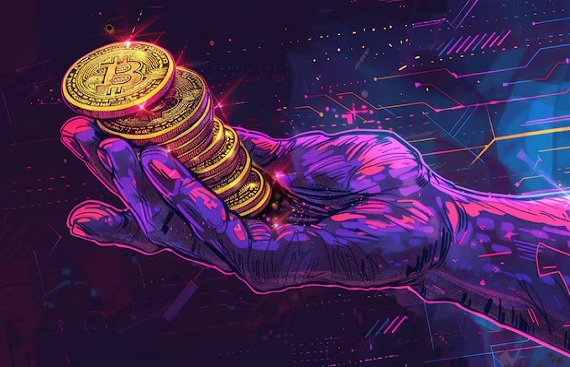Rewiring the Global Payment Grid with Stablecoin Innovation

- Stablecoins enable real-time, low-cost cross-border transactions, challenging traditional systems like SWIFT with faster, more inclusive alternatives.
- Global adoption is accelerating, with companies like Visa, PayPal, and startups like RemitBlock integrating stablecoin-based payment solutions.
- India is emerging as a strategic hub, leveraging UPI and blockchain innovation to transform remittance flows and digital financial infrastructure.
In an era where money moves faster than ever, stablecoins are emerging as the unsung heroes of the digital financial ecosystem. As a point where blockchain innovation meets the traditional finance world, stablecoins are not simple digitalized forms of paper money but are programmable, cross-border, and decentralized instruments which have the potential to fundamentally rewire value exchange in the world.
The conventional global payment network dominated by systems with more than 50 years, such as SWIFT, is very costly, slow, and non-transparent especially on international payments. Stablecoins nevertheless provide a chance to leap pass these obsolete mechanisms. As institutional support continues to grow, regulatory debate proceeds, and expanding collusion with fintech systems, 2025 is rapidly becoming one of the deciding years in the common usage of these stablecoins in everyday usage.
Stablecoins: The Fast Lane of Global Finance
![]()
Stablecoins are a type of digital currency balanced on the value of a stable asset (typically either fiat currencies, such as the USD, or commodities, such as gold). As opposed to traditional cryptocurrencies that are volatile, stablecoins are not volatile in their price, thus they are appealing to the real-time, and high-volume transactions.
They merge the programmability and transparency of blockchain with credibility of the conventional money and allow:
- Instant cross-border payments
- Lower remittance fees
- Greater financial inclusion
- Easier integration into e-commerce ecosystems
- B2B and supply chain financing solutions
What once required a labyrinth of intermediaries and 3-5 business days can now be completed in seconds using stablecoins at a fraction of the cost.
Kumar Binit, Founder & CEO, FinMapp, says, "A significant feature of Defi is that it eliminates the pre-established power that banks and other financial intermediaries exercise over money, financial products, and financial services. It democratizes the system by allowing people to secure their money and resources in a trusted digital wallet, transfer funds within seconds, and there is no third-party interference. The development of the Defi application can be supported by stablecoins, software, and hardware".
B2B and Institutional Use Cases
![]()
Stablecoins are not the niche tools of crypto enthusiasts anymore. They are quickly entering into the world of enterprises. Large payment processors such as Visa, Mastercard, and PayPal are incorporating stablecoin. Stripe has also included USDC payouts to freelancers around the world, and fintech companies, such as Circle and Fireblocks are also developing stablecoin rails to allow multinationals to pay cross-border invoices on the spot.
Even governments are starting to pay attention. At the same time, many are testing the new Central Bank Digital Currencies (CBDCs), and considering the regulatory regime required to oversee the issuers of private stablecoins. With volatile local currencies, stablecoins function as a store of value and a backdoor to the foreign markets
India’s Strategic Role in the Stablecoin Revolution
India is uniquely positioned in this global shift. As the world’s largest recipient of remittances, it faces high transaction fees and slow transfer times under current models. With the use of stablecoins, it is possible to significantly cut the costs and transfer money much faster and more available to millions of Indian households.
The Reserve Bank of India (RBI) has already launched a pilot on its Digital Rupee, which is evidence of the deep interest in blockchain-based monetary innovation. While the government remains cautious about the private cryptocurrencies, it is currently in the negotiation process of the regulations, which also incorporate the guidelines concerning the stablecoins.
The UPI infrastructure of India is one of the most developed digital payment systems across the globe. If interoperable with stablecoins, UPI could enable frictionless international transfers. Indian fintechs are already exploring models where users can receive stablecoins and cash out via UPI wallets.
The combination of a booming digital economy, regulatory momentum, and strong developer ecosystem places India as a potential leader in stablecoin implementation not just a participant.
Three Real-World Case Studies
Visa x Circle – Streamlining Global Settlements
In 2024, Visa announced a partnership with Circle to allow corporate customers to settle cross-border payment using USDC, one of the most popular USD-backed stablecoins. Companies were able to settle payments in minutes instead of days that it took the international wire transfers to clear. This invention allowed the small and mid-sized enterprise in such nations as Philippines and India to communicate effectively with the suppliers in the US, enhancing the cash flow and accountability.
Impact: Liquidity of SMEs enhanced and the costs of transactions decreased by more than 60 percent.
Fireblocks x PayU – Latin America to India
PayU, a global payment provider, teamed up with Fireblocks to enable stablecoin settlements between Latin American merchants and Indian suppliers. Using stablecoins like USDC and EURC, businesses avoided currency conversion losses and delays.
Impact: Settlements that once took 4–5 days now cleared in under 5 minutes, with near-zero FX slippage.
Indian Startup ‘RemitBlock’ - Cross-border Remittances via Stablecoins
A Bengaluru-based startup, RemitBlock, launched a pilot to let Indian migrant workers in the UAE send money home using USDC on the Polygon blockchain. Recipients in India received INR directly into their UPI wallets via on-chain to off-ramp conversion.
Impact: Cut down the remittance charges to 1.2% downwards (200%) and reduced the amount spent by households on a per-annum basis by app 2,000 rupees.
With this innovation at the grass-roots level, the reliance on conventional money transfer agents was not only dropped but it also made transparency and speed which are the essential requirements of the migrant workers a possibility.
Also Read: Top 5 Billionaires Who Turned Poverty into Power
The Hidden Challenges Behind Stablecoins
![]()
- Regulatory fragmentation: Jurisdictions vary in their classification of stablecoins as securities, commodities, or currencies.
- CBDC competition: Government-issued digital currencies could reduce the need for privately-issued stablecoins.
- Systemic risk: If a major stablecoin issuer collapses, it could ripple across the global financial system.
- Privacy concerns: Programmability can lead to surveillance if not properly regulated.
Despite these challenges, the potential benefits are too significant to ignore.
Wrapping It Up!
The Quiet but Powerful Shift! In 2025, the global payment grid is no longer defined by SWIFT codes and settlement delays. It’s being rewritten by lines of smart contract code and real-time asset movement. Stablecoins are not just innovation they are infrastructure. This transformation isn’t happening overnight or in isolation. It’s being built by fintechs, adopted by institutions, enabled by regulation, and embraced by users around the world. Stablecoins have gone from fringe finance to foundational force and the rewiring of the global economy has already begun.

